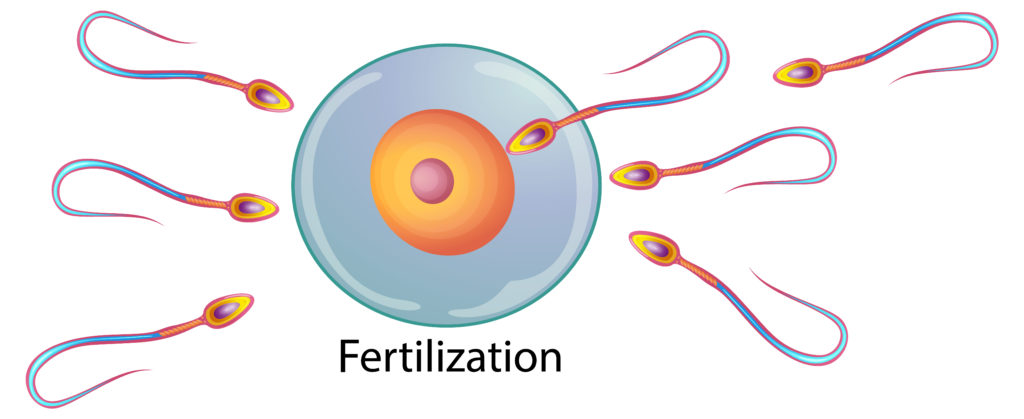Azoospermia and IVF: Overcoming Male Infertility Challenges


Infertility is a challenging issue that affects millions of couples worldwide, and it can be attributed to various factors, including both male and female reproductive health. One of the male-specific causes of infertility is azoospermia, a condition characterized by the absence of sperm in a man’s ejaculate. While azoospermia can be a daunting diagnosis, advances in medical technology, particularly in vitro fertilization (IVF) techniques, offer hope to couples facing this condition. In this article, we will explore the relationship between azoospermia and IVF, discussing the various subtypes of azoospermia, treatment options, and the role of IVF in helping couples achieve their dream of parenthood.


What is Azoospermia?
Azoospermia is a medical condition characterized by the complete absence of sperm in a man’s ejaculate. It is estimated to affect about 1% of the male population and is one of the leading causes of male infertility.
Azoospermia can be classified into two primary subtypes:
- Obstructive Azoospermia (OA): In this subtype, sperm production is normal, but a physical blockage prevents the sperm from reaching the ejaculate. Common causes of OA include congenital abnormalities, prior infections, or surgical interventions like vasectomy.
- Non-Obstructive Azoospermia (NOA): NOA is more complex and challenging. In this subtype, the testes do not produce enough sperm, often due to genetic or hormonal factors. It is the most common form of azoospermia.
Treatment Options for Azoospermia
The treatment approach for azoospermia depends on the underlying cause and subtype. Here are some common treatment options:
Obstructive Azoospermia
Surgical interventions, such as vasectomy reversal or epididymal sperm retrieval, can help in cases of OA. These procedures aim to remove the blockage or retrieve sperm directly from the reproductive tract.
Non-Obstructive Azoospermia
NOA presents a more significant challenge. Hormone therapy may be attempted to stimulate sperm production. However, it may not always be effective. In cases where hormonal treatments fail, or if the condition is due to genetic factors, couples often turn to assisted reproductive technologies (ART) like IVF.
IVF and Azoospermia
In vitro fertilization (IVF) is a groundbreaking fertility treatment that has offered hope to countless couples facing infertility, including those dealing with azoospermia. Here’s how IVF can be applied in cases of azoospermia:
Sperm Retrieval Techniques
In cases of obstructive azoospermia, where there is an obstruction preventing sperm from reaching the ejaculate, sperm can often be retrieved directly from the reproductive tract. This can be done through procedures like testicular sperm extraction (TESE) or percutaneous epididymal sperm aspiration (PESA). The retrieved sperm can then be used for IVF.
Donor Sperm
In cases of non-obstructive azoospermia, where sperm production is severely impaired, and other treatments have failed, couples can opt for donor sperm. IVF can be performed using donor sperm to fertilize the partner’s eggs, allowing the couple to achieve pregnancy and have a biological connection to the child.
ICSI (Intracytoplasmic Sperm Injection)
In situations where the retrieved sperm have lower quality or quantity, ICSI can be employed during the IVF process. With ICSI, a single sperm is directly injected into an egg, increasing the chances of successful fertilization.
Pre-Implantation Genetic Testing (PGT)
To ensure the best possible outcome, couples dealing with azoospermia may opt for PGT to screen embryos for genetic abnormalities before implantation, reducing the risk of miscarriage or the birth of a child with genetic disorders.
Is IVF effective for individuals with azoospermia?
Whether IVF (In Vitro Fertilization) will work for individuals or couples affected by azoospermia depends on the specific subtype of azoospermia, the underlying causes, and the available treatment options. Let’s explore the potential outcomes based on the two primary subtypes of azoospermia:
- Obstructive Azoospermia (OA): IVF is often a successful option for couples when the male partner has obstructive azoospermia. In this subtype, sperm production is normal, but there is a physical blockage that prevents sperm from reaching the ejaculate. In such cases, sperm can typically be retrieved directly from the reproductive tract using procedures like testicular sperm extraction (TESE) or percutaneous epididymal sperm aspiration (PESA). Once sperm is successfully retrieved, it can be used for IVF, usually combined with intracytoplasmic sperm injection (ICSI) to fertilize the partner’s eggs. The success rates for IVF in cases of obstructive azoospermia are generally good.
- Non-Obstructive Azoospermia (NOA): IVF can also be an option for couples dealing with non-obstructive azoospermia, but the success rates may vary. In NOA, the testes do not produce enough sperm, often due to genetic or hormonal factors. The chances of successfully retrieving sperm in cases of NOA can be lower than in OA. Techniques like microdissection testicular sperm extraction (micro-TESE) are often employed to search for isolated pockets of sperm within the testes. If viable sperm are found, they can be used for IVF with ICSI. However, there is no guarantee of sperm retrieval in every case of NOA, and the success rates may be lower compared to cases of OA.
It’s crucial to consult with a fertility specialist who can assess the specific situation and provide guidance on the most suitable treatment options. Factors such as the age of the female partner, the quality of retrieved sperm, and any underlying female fertility issues also play a role in the overall success of IVF.
In cases where sperm retrieval is not successful or not an option, couples may explore alternative routes to parenthood, such as using donor sperm, adoption, or gestational surrogacy, depending on their preferences and circumstances.
Ultimately, the choice of treatment for azoospermia should be made in consultation with a healthcare provider, taking into account the individual’s or couple’s medical history, preferences, and the available options for addressing their specific situation.
Is it possible to conceive a child with Azoospermia?
Yes, it is possible to conceive a child when one partner has azoospermia, although the approach and success rate can vary depending on the specific subtype of azoospermia and the underlying causes. We have mentioned the treatment methods above.
What is the cost of Azoospermia treatment with IVF?
Please keep in mind that these costs can vary significantly based on individual circumstances, clinic location, specific treatments required, and other factors.
| Aspect of Treatment | UK | USA | Turkey |
|---|---|---|---|
| Initial Diagnostic Testing | £500 – £2,000 | $1,000 – $3,000 | 1,000 – 3,000 TL |
| Sperm Retrieval Procedures (TESE/PESA) | £1,500 – £4,000 | $2,500 – $6,000 | 2,000 – 6,000 TL |
| In Vitro Fertilization (IVF) | £3,000 – £5,000 | $10,000 – $15,000 | 5,000 – 10,000 TL |
| Intracytoplasmic Sperm Injection (ICSI) | £1,000 – £2,000 | $1,500 – $3,000 | 1,000 – 3,000 TL |
| Pre-Implantation Genetic Testing (PGT) | £2,000 – £5,000 | $5,000 – $7,000+ | 4,000 – 7,000+ TL |
| Donor Sperm (if needed) | £800 – £2,000+ | $500 – $1,000+ | 500 – 2,000+ TL |
| Fertility Medications | £500 – £2,000 | $1,000 – $5,000+ | 1,000 – 5,000+ TL |
Please note that these estimates are in local currencies (British Pounds, US Dollars, and Turkish Lira) and are subject to change over time. Additionally, the cost of IVF and related procedures can vary significantly between different clinics and regions within each country. It is essential to consult with specific fertility clinics to obtain accurate and up-to-date cost information tailored to your situation.
Conclusion
Azoospermia is a challenging condition that can significantly impact a couple’s dream of parenthood. However, with advancements in reproductive medicine, particularly in vitro fertilization (IVF) and associated techniques, many couples can overcome this hurdle and realize their goal of having a child. The key to successful treatment lies in a thorough evaluation by a fertility specialist to determine the subtype of azoospermia and the most appropriate course of action. IVF, along with various sperm retrieval and genetic testing options, provides hope and the opportunity for individuals and couples to build their families despite the challenges posed by azoospermia.
For more information about azoospermia, please contact us.



